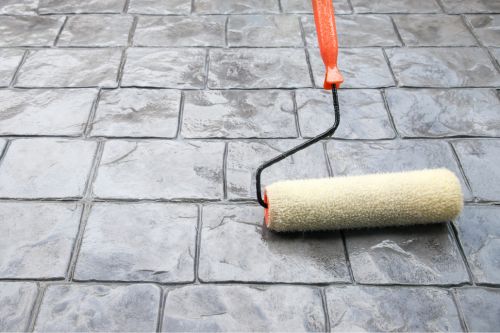The waterproofing of a terrace is a crucial aspect of the maintenance of any structure, whether it is a private home or a commercial building. A well waterproofed terrace not only protects the interior of the building from water seepage and structural damage, but also prolongs the life of the terrace and ensures a safe and comfortable outdoor living space. In this blog post, we will explore in detail the different systems available for waterproofing a terrace, considering their advantages, disadvantages and recommended applications.
Why waterproof a terrace?
Decks are constantly exposed to the elements, from rain and snow to scorching sunlight and temperature changes. This prolonged exposure can cause significant damage if not properly treated. Water seepage can cause dampness inside the building, which in turn can lead to mould growth, wood rot and corrosion of metal materials. In addition, standing water on the terrace surface can lead to cracking and erosion of the cladding, reducing its lifespan and aesthetic appeal.
Contact our professionals to paint your home
Waterproofing systems available
1. Asphalt membranes
Asphalt membranes are one of the most common and proven options for roof waterproofing. They consist of polymer-modified asphalt sheets that are applied in layers over the terrace surface. Asphalt membranes offer excellent water and weather resistance, as well as good durability in adverse weather conditions. They are suitable for a variety of surfaces, including concrete, metal and wood, and can be applied to decks of any size and shape.
2. Liquid polyurethane membranes
Liquid polyurethane membranes are a more modern and versatile option for deck waterproofing. They are applied in liquid form and dry to form a waterproof and flexible membrane that adapts to the shape and texture of the surface. Liquid polyurethane membranes offer excellent weather and UV resistance as well as high durability and elasticity. They are ideal for terraces with irregular shapes or complicated surfaces, and can be applied in a single layer without joints or overlaps.
3. Cementitious systems
Cementitious systems are a traditional option for terrace waterproofing, especially in new construction projects. They consist of cement-based mortars and coatings that are applied to the deck surface to form a durable, waterproof coating. Cementitious systems offer excellent adhesion to a variety of substrates and good resistance to abrasion and chemicals. However, they may require extended curing time and may be more prone to cracking compared to other options.
Considerations when choosing a waterproofing system
When selecting a waterproofing system for your deck, there are several important factors to consider:
- Local climate and weather conditions: You should consider the prevailing climate in your area, as well as extreme weather conditions that may affect the durability of the waterproofing system.
- Surface type: The surface material of your deck will influence the choice of the appropriate waterproofing system. For example, concrete decks may require a different treatment than wooden decks.
- Budget: It is important to consider the budget available for the project, as some waterproofing systems may be more expensive than others.
- Durability and service life: You should assess the durability and expected service life of the waterproofing system, as well as the associated maintenance costs.
- Contractor experience: Be sure to hire a contractor with experience in installing your chosen waterproofing system to ensure high-quality, long-lasting results.
Additional details on waterproofing systems
1. Asphalt membranes:
Asphalt membranes are highly weather resistant and offer excellent protection against moisture. They can be applied to a variety of surfaces and are relatively easy to install. However, it is important to ensure that they are applied correctly to avoid future leakage problems.
2. Liquid polyurethane membranes:
Liquid polyurethane membranes are very versatile and can be applied in a single layer without joints or overlaps, making them ideal for irregularly shaped terraces. They offer excellent weather and UV resistance, and their flexibility makes them less prone to cracking over time.
3. Cementitious systems:
Cementitious systems are durable and offer excellent adhesion to a variety of substrates. However, they may require extended curing time and may be more susceptible to cracking compared to other systems. It is important to follow the manufacturer’s instructions and perform proper maintenance to ensure long-term effectiveness.
Additional tips for waterproofing terraces
- Regularly inspect your deck: Conduct regular inspections to detect any signs of damage or deterioration in the waterproofing system and take immediate corrective action.
- Perform proper maintenance: Follow the manufacturer’s recommendations for regular maintenance of the waterproofing system, such as cleaning and applying protective sealants.
- Consult a professional: If you are unsure which waterproofing system is right for your deck, consult a waterproofing professional for personalised advice to ensure optimal results.

